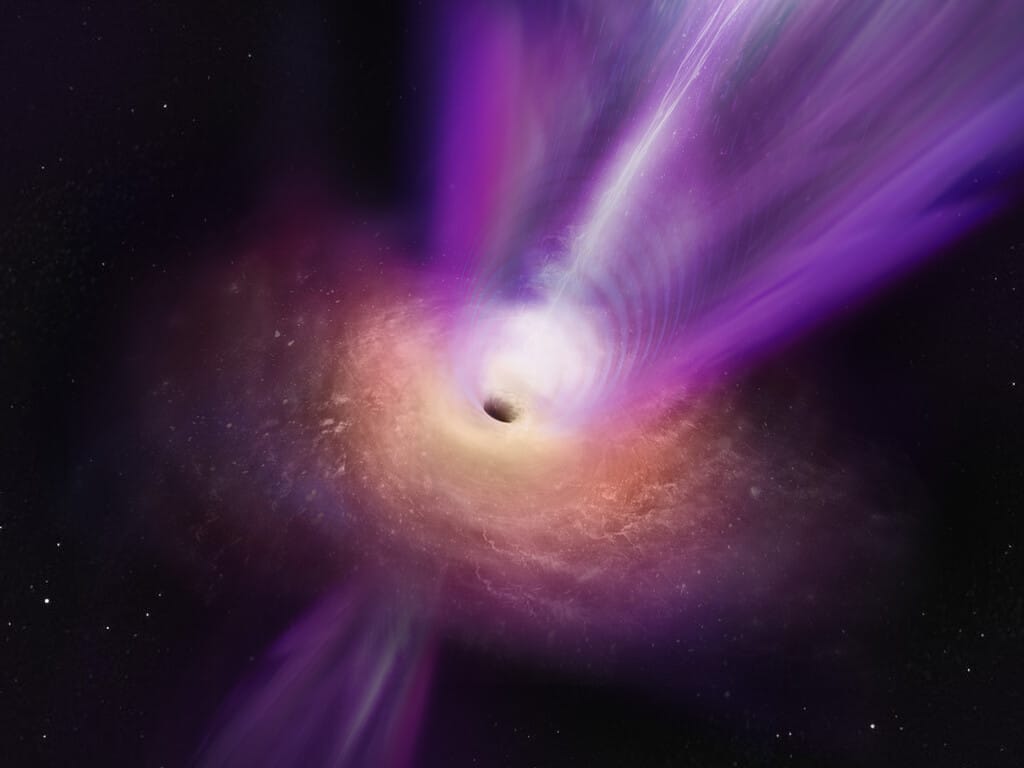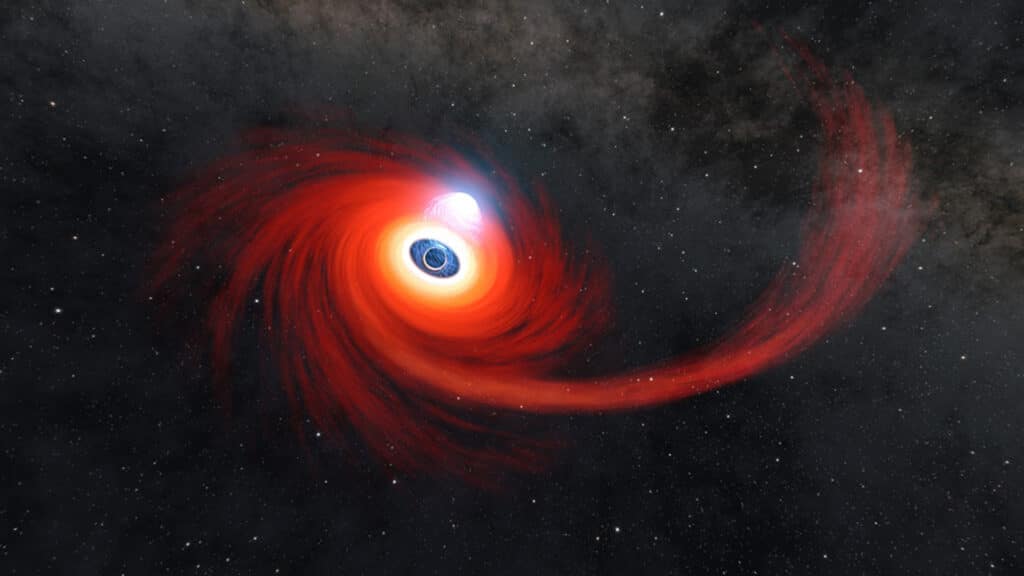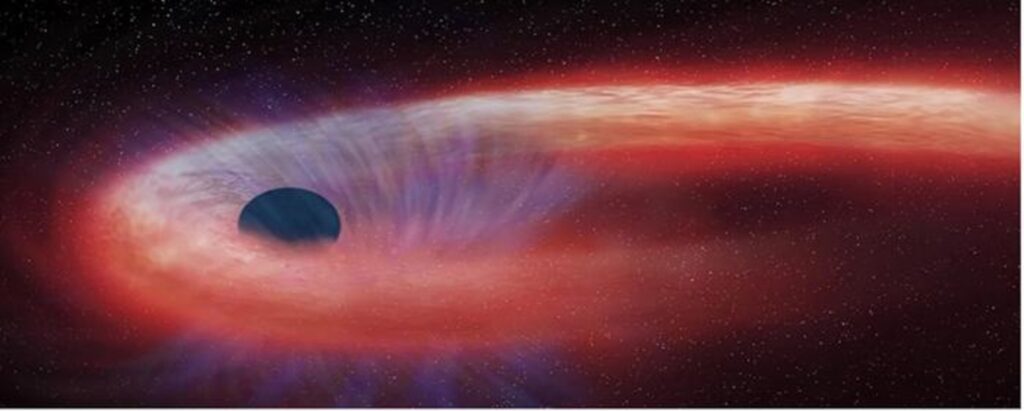A new model is challenging our understanding of how supermassive black holes (SMBHs) consume stars. Researchers at Syracuse University are paving the way into how SMBHs are now viewed.
At the center of most large galaxies, including our own Milky Way, resides an SMBH. These cosmic giants grow by pulling in and devouring nearby objects, such as stars, a process that releases enormous amounts of energy. When a star gets too close to an SMBH, it is torn apart by the black hole’s intense gravitational pull, an event known as a tidal disruption event (TDE). TDEs are key to studying black holes, as they temporarily light up these otherwise dark regions of space.

Up until now, understanding these events relied heavily on numerical hydrodynamical simulations, which are precise but time-consuming and expensive. Alternatively, physicists used simpler analytical models to estimate the rate at which a star’s material falls back onto the SMBH, known as the accretion rate. However, these models, like the well-known “frozen-in” approximation, have been somewhat limited in accuracy.
Enter the CN22 model, proposed in 2022 by Eric Coughlin, a physics professor at Syracuse University, and Chris Nixon, an associate professor of theoretical astrophysics at the University of Leeds. This new model predicts the peak timescale for TDEs based on the properties of the star and the mass of the black hole.
To test and expand upon the CN22 model, study lead author Ananya Bandopadhyay, a PhD student at Syracuse, captained a team that included both college and high school students. They utilized a stellar evolution code called “Modules for Experiments in Stellar Astrophysics” to study star evolution. Scientists then compared the CN22 model predictions against various types of stars and SMBHs. Their research also included numerical hydrodynamical simulations of a sun-like star being disrupted by a SMBH.
Scientists say that the CN22 model was in extremely good agreement with the hydrodynamical simulations. Most notably, the team found that the peak accretion rate in a TDE is largely unaffected by the star’s properties, being about 50 days for a star similar to our Sun consumed by a black hole like Sagittarius A*. This finding starkly contrasts the predictions of the “frozen-in” model, which suggests a peak timescale of two years for the same scenario.
“This overturns previously held notions about the way that TDEs work and what types of transients you could possibly produce by totally destroying a star,” says Bandopadhyay in a media release. “By confirming the accuracy of the CN22 model, we offer proof that this type of analytical method can greatly speed up the inference of observable properties for the disruption of stars having a range of masses and ages.”

The study reveals that complete TDEs cannot last longer than a month, debunking the previous belief that they could explain light curves peaking and decaying over several years.
“If you measure the rise time, what you could be directly peering into is actually the property of the supermassive black hole, which is the Holy Grail of TDE physics — being able to use TDEs to say something about the black hole,” notes Coughlin.
This research marks a significant leap forward in understanding SMBHs and their interactions with stars. By validating the CN22 model, the Syracuse team has opened new avenues for making observable predictions about TDEs, enhancing our ability to explore and understand the mysterious workings of black holes and the distant universe.
The study is published in The Astrophysical Journal Letters.












